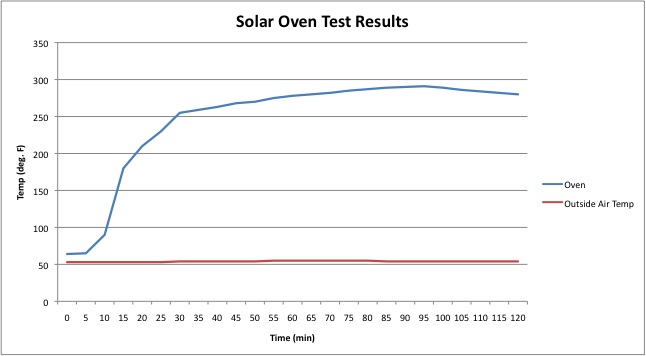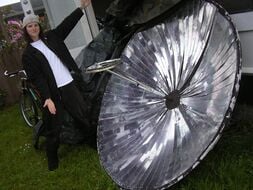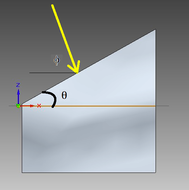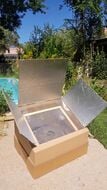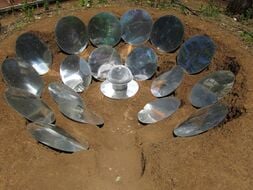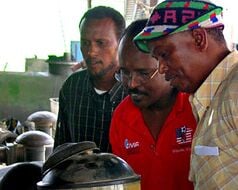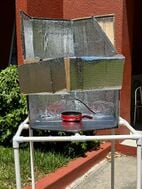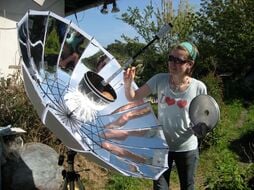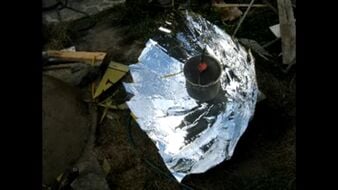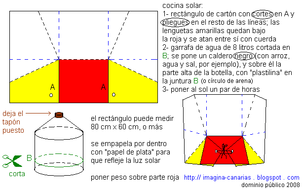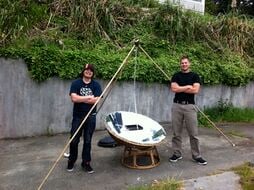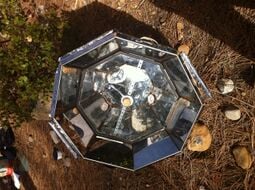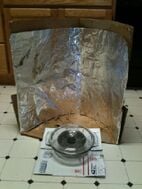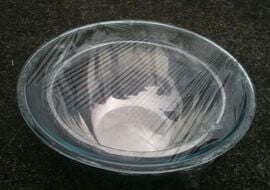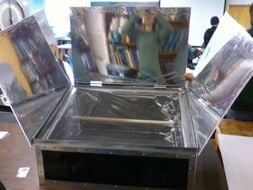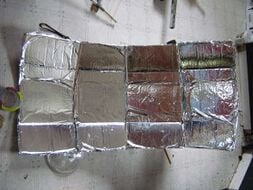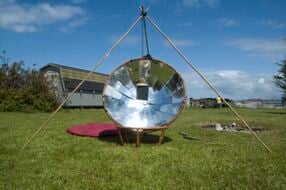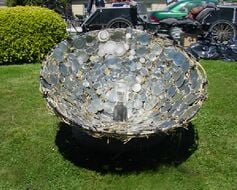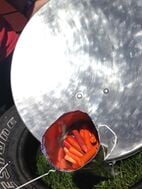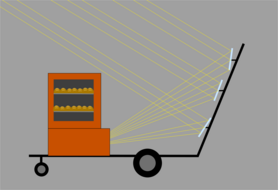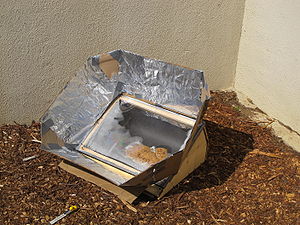
Team Universal Research and Design's goal was to design a solar oven that kids, ages 8-12, could build with the help of an adult. We were commissioned by the group Locally Delicious to create this design for their forthcoming book, Lunchbox Envy. It is hoped that the design will encourage the kids to think about their energy consumption, and make them more aware of alternative, more sustainable methods of cooking.
Background[edit | edit source]
Locally Delicious is a group of women who have strong beliefs in locally grown foods and sustainability. They also want to educate kids on healthy food options in order to ensure a healthier future. They are writing a book that aims to educate kids and adults on healthier, more sustainable food options, including information on how to grow and cook all your own food in a sustainable manner. Part of their book will include directions on how to create devices, such as a solar oven, that encourage people to make environmentally conscious decisions. In order to do this they collaborated with Cal Poly Humboldt's Engr205 class in order to come up with such designs.
Problem statement and criteria[edit | edit source]
| Criteria | 0-10 weighted | Defined |
|---|---|---|
| Safety | 10 | Ability to reach 160oF, the temperature that kills bacteria. Minimizing hot contact surfaces. |
| Cost | 8 | Less than $125.00 |
| Materials | 7 | Minimal amount of plastics and other non-recyclable materials. Materials that are easily available (salvageable) |
| Durability | 5 | Minimum 12 uses without falling apart. |
| Aesthetics | 2 | Pleasing to the eye. |
Description of final project[edit | edit source]
The final design is a triangular shaped box made out of wood. The seams are sealed with food grade silicone caulk and the interior of the box is covered with black construction paper. Felt weather stripping is stapled along the edges of the front face. Two pieces of glass are used to make a double paned lid which is then placed over the opening, on top of the felt. A cardboard box is cut to an appropriate angle and the wood box is placed within it. Solar reflectors are then made from cardboard and tinfoil, and positioned along the edges of the box to capture additional solar radiation.
-
Fig 1: Solar oven showing reflectors
-
Fig 2: Side view showing back angles
-
Fig 3: Front view
Costs[edit | edit source]
| Item | Quantity | Retail price | Our price | Retail cost |
|---|---|---|---|---|
| Wood | 12 board foot | $2/board foot | $24.00 | $24.00 |
| Acrylic | 1 sheet | $11.99/sheet | $23.98 | $23.98 |
| Silicon caulk | 1 tube | $6.99 | $6.99 | $6.99 |
| Cardboard | 2 large boxes | $0.25 | free | $0.25 |
| Aluminum foil | 1 roll | $1.99 | $1.00 | $1.99 |
| Weather stripping | 1 roll | $4.99 | $4.99 | $4.99 |
| Construction paper (black) | 2 sheets | $1.89 | $1.89 | $3.78 |
| Screw | 1 box | $5.99 | Free | $5.99 |
| Total | $64.74 | $71.97 | ||
Testing Results[edit | edit source]
A test run was conducted with the "catch and cook" solar oven on 27 Apr 2011. The oven was placed outside at noon, and by 2:00PM high clouds had started to move in, and the oven started to cool. The figure below shows how fast the oven is able to obtain temperatures well in excess of the 160 degree minimum we set out to obtain.
How to build[edit | edit source]
See more at https://www.appropedia.org/Instructions_for_solar_oven
Using the solar oven[edit | edit source]
The YouTube video below details how set your solar oven up in order to get the best results.
Team Universal Research and Design[edit | edit source]
http://www.locally-delicious.org/
Related projects[edit | edit source]
See also[edit | edit source]
References[edit | edit source]



